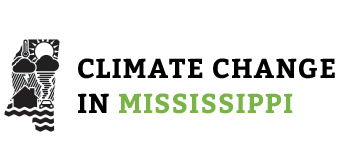Pollen, Mold Triggers for Allergies and Asthma
By Danielle Angelo
Climate change affects air quality through multiple pathways, but one of them is airborne pollen that triggers allergies and, in some cases, asthma.
The U.S. Centers for Disease Control says warmer weather means longer pollen seasons with higher concentrations. Pollen is tiny seeds or grains dispersed from flowering plants, including trees, grass and weeds. As people breathe, these particles enter their lungs – usually with little to no consequence.
However, with climate change causing a shift in rain patterns, more frost-free days and warmer seasonal temperatures, people will be exposed to more and different pollens. The CDC says this means when the “pollen season starts and ends and how long it lasts each year, how much pollen plants create and how much is in the air, how pollen affects our health, how much pollen we’re exposed to and our risk of experiencing allergy symptoms” will be different. Higher pollen concentrations and longer pollen seasons can increase allergic sensitization and asthma episodes.
In the same way, the U.S. Global Change Research Program found that current ground-level ozone is estimated to be responsible for thousands of hospital visits, millions of cases of acute respiratory symptoms and thousands of premature deaths each year in the United States. “Populations exposed to ozone air pollution are at greater risk of dying prematurely, being admitted to the hospital for respiratory hospital admissions, being admitted to the emergency department and suffering from aggravated asthma,” according to a program publication. “Allergic illnesses, including hay fever, affect about one-third of the U.S. population, and more than 34 million Americans have been diagnosed with asthma. The prevalence of hay fever has increased from 10 percent of the population in 1970 to 30 percent in 2000.”
The CDC found that in the United States, allergic rhinitis affects as many as 60 million people a year. Allergic conjunctivitis affects 30 percent of the general population, and seven out of 10 people with allergic rhinitis. It is expected that these numbers will continue to rise as climate change causes higher pollen concentrations.
For people with asthma – a dangerous condition in which lung function is compromised – pollen has been a trigger and caused an increase in hospitalizations for these people in recent years. “Medical costs linked with pollen exceed $3 billion every year, with nearly half of those costs being linked to prescription medicine,” the CDC said. “Higher pollen concentrations and longer pollen seasons can also make you more sensitive to allergens. This can trigger asthma episodes in individuals with asthma and diminish productive work and school days.”
Climate change is not just expected to alter outdoor air quality, but can also alter affect indoor conditions. The U.S .Global Change Research Program reports, “Reduced mixing of outdoor and indoor air limits penetration of outdoor pollutants into the indoors, but also leads to higher concentrations of pollutants generated indoors since their dilution by outdoor air is decreased.”
Mold is another complication. Rising temperatures and extreme rainfall can increase mold growth. Mold spores, like pollen, lead to worsened respiratory conditions and trigger asthma. About 4.6 million cases of worsened asthma and about 20 percent of common respiratory infections are linked to mold in homes. Children are the main population of concern for this climate change affect, the report says, because “nearly 6.8 million children in the United States are affected by asthma, making it a major chronic disease of childhood.“
